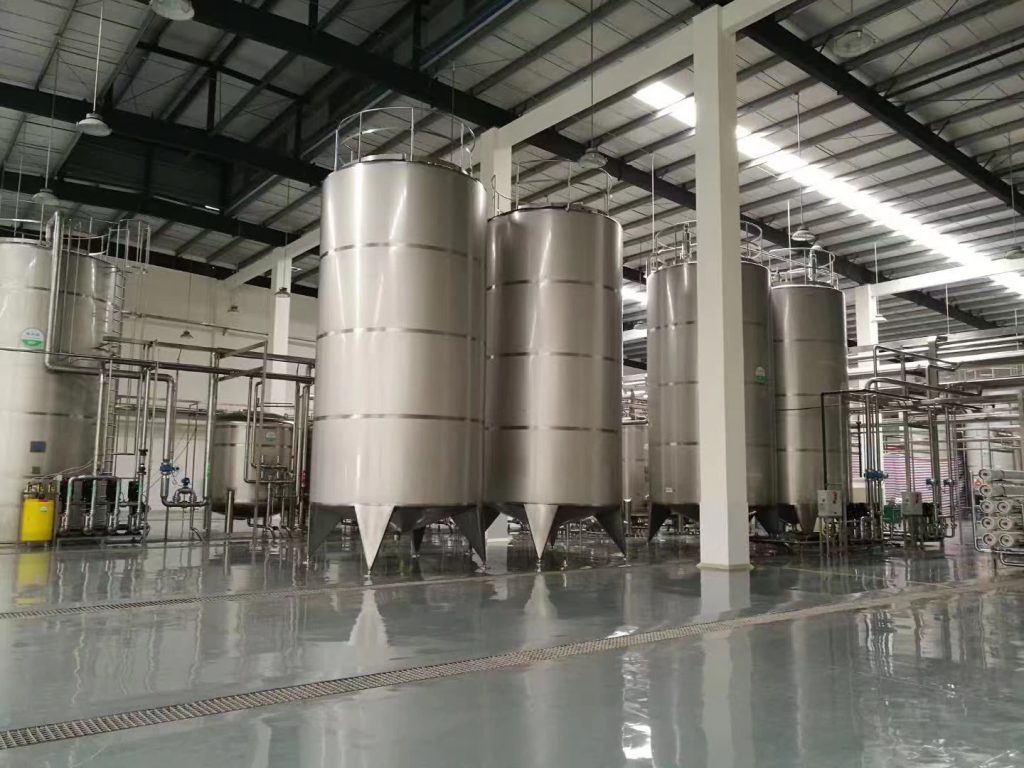Introduction

Efficient milk storage is critical in the dairy industry to maintain product quality and optimize operations. Modern milk storage tank designs play a pivotal role in achieving these goals by incorporating advanced features and ensuring hygienic conditions.
Importance of Milk Storage Tanks
Milk storage tanks are indispensable for preserving the freshness and quality of milk before processing. They maintain optimal temperatures and prevent bacterial growth, thereby safeguarding the nutritional integrity and taste of the milk. This ensures that dairy products meet stringent quality standards and consumer expectations.
Key Features of Modern Milk Storage Tanks
Modern milk storage tanks are equipped with advanced features designed to maximize efficiency and operational convenience. These include:
- Insulation: High-quality insulation materials such as polyurethane foam or vacuum panels ensure minimal heat transfer, maintaining consistent milk temperature and reducing energy consumption.
- Agitation Systems: Integrated agitation systems prevent cream separation and ensure uniform composition throughout the tank, which is crucial for maintaining product consistency.
- Cleaning Systems: Automated Clean-In-Place (CIP) systems streamline sanitation processes by automatically cleaning and disinfecting tanks, reducing downtime and ensuring compliance with hygiene standards.
- Monitoring and Control: Advanced sensors and control systems monitor milk conditions in real-time, allowing for precise temperature control and early detection of any issues that could affect product quality.
Design Considerations for Milk Storage Tanks
The design of milk storage tanks significantly impacts their functionality and efficiency. Factors such as tank material, capacity, and layout are carefully considered to optimize milk storage and processing operations.
- Tank Material: Stainless steel is commonly used due to its durability, corrosion resistance, and ease of cleaning. Other materials like aluminum and food-grade plastics are also used for specific applications.
- Capacity: Tank capacity varies based on the dairy farm’s production volume and processing requirements. Large farms may opt for vertical silos with capacities ranging from 10,000 to 50,000 liters, while smaller operations may prefer horizontal tanks with capacities of 5,000 to 20,000 liters.
- Layout: Efficient layout design ensures smooth workflow and accessibility for maintenance and cleaning activities. It also considers space utilization and integration with other dairy processing equipment.
Advantages of Upgrading to Modern Milk Storage Tanks
Upgrading to modern milk storage tanks offers several advantages that contribute to overall operational efficiency and product quality:
- Improved Efficiency: Enhanced insulation and automated systems reduce energy consumption and operational costs. Efficient agitation systems minimize product waste by maintaining homogeneous milk composition.
- Enhanced Product Quality: Strict temperature control and automated cleaning systems ensure milk freshness and hygiene, meeting regulatory standards and consumer expectations for quality dairy products.
- Compliance: Modern milk tanks are designed to meet stringent hygiene and safety regulations, ensuring dairy farms operate in accordance with industry standards.
Types of Milk Storage Tanks
| Tank Type | Description |
|---|---|
| Vertical Silo | Tall, cylindrical tanks often used for large-scale dairy farms. They can have capacities ranging from 10,000 to 50,000 liters. Commonly insulated with polyurethane foam for temperature stability. |
| Horizontal Tank | Wide, horizontal tanks suitable for smaller to medium-sized dairy operations. Capacities typically range from 5,000 to 20,000 liters. Insulated with materials like rockwool to maintain milk temperature. |
| Cooling Tank | Compact tanks designed for rapid cooling of milk immediately after milking. Capacities range from 1,000 to 10,000 liters. Insulated with vacuum panels for efficient cooling and storage. |
Case Studies: Efficiency Gains with Modern Designs
Numerous dairy farms and processing plants have reported significant efficiency gains following the adoption of modern milk storage tank designs. For instance, Pure Dairy Farm increased production capacity by 20% while reducing energy consumption by 15% after upgrading to insulated vertical silos with automated cleaning systems. These case studies underscore the tangible benefits of investing in advanced milk storage technologies.
Implementation and Maintenance Tips

Proper implementation and regular maintenance are crucial for maximizing the benefits of milk storage tanks:
- Installation: Ensure tanks are installed by qualified professionals to optimize performance and safety.
- Maintenance: Follow manufacturer guidelines for routine maintenance and inspections. Regularly check insulation integrity, clean agitation systems, and calibrate sensors for accurate monitoring.
- Training: Train staff on proper operation procedures and safety protocols to maximize the lifespan and efficiency of milk storage tanks.
Conclusion
Modern milk storage tank designs are integral to enhancing efficiency, maintaining product quality, and achieving sustainability goals in the dairy industry. By investing in advanced features and adhering to best practices in installation and maintenance, dairy farms can optimize operations, reduce costs, and produce high-quality dairy products that meet consumer expectations and regulatory standards. Choosing the right milk tank design tailored to operational needs ensures optimal performance and long-term success in dairy farming.
FAQ
Q: What are the different types of milk storage tanks available?
A:Answer: Milk storage tanks come in various types, including vertical silos, horizontal tanks, and cooling tanks. Each type offers distinct advantages depending on dairy farm size and production requirements.
Q: How do milk storage tanks contribute to sustainability?
A:Answer: Modern milk storage tanks improve sustainability through energy-efficient insulation and automated systems that reduce water and chemical usage during cleaning processes.
Q: What size of milk storage tank should I choose for my dairy farm?
A:Answer: Tank size should be based on daily milk production volumes and processing capacities. Consult with dairy equipment specialists to determine the optimal tank size for your specific operational needs.

